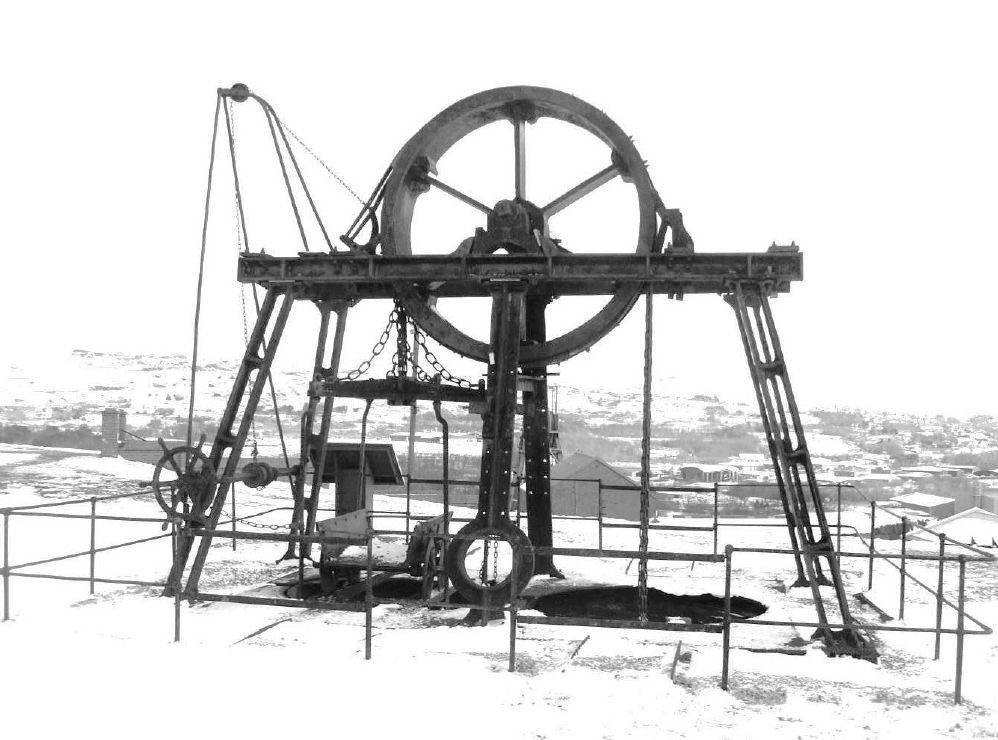This was the common method of winding in the shallow pits of the early nineteenth century. Probably over 100 pits near the rim of the Coalfield worked this method, particularly along the northern sector.
An early example of the water balance type of headgear was at Dukes Pit near Tredegar, which was opened in 1806 and operated at a depth of one hundred feet. The system was worked by filling a container of water that was fixed under the carriage with the empty tram in it on the surface. The container under the carriage on the pit bottom with the full tram in it was left empty.
The operator would then release a brake and the combined weight of the water, carriage and tram would be sufficient to raise the full tram of coal from the pit bottom to the surface. Once the empty tram had reached pit bottom the water was drained off, and either run out through a drainage adit or pumped back to the surface. Another empty tram would replace the full one on the surface and the process repeated.
Ponds were constructed at the surface of the mine to feed the tanks. This system was popular in South Wales until the 1870s when steam winding rendered it outmoded.
The deepest pit using this method of winding was the No.7 (Mountain) pit at Tredegar which was 630 feet deep. The last balance pit closed in 1904. The water balance gear from the Brynpwllog pit at Rhymney was dismantled and reassembled at the National Museum in Cardiff. This is possibly the only standing example of the system left in South Wales.
Return to previous page

